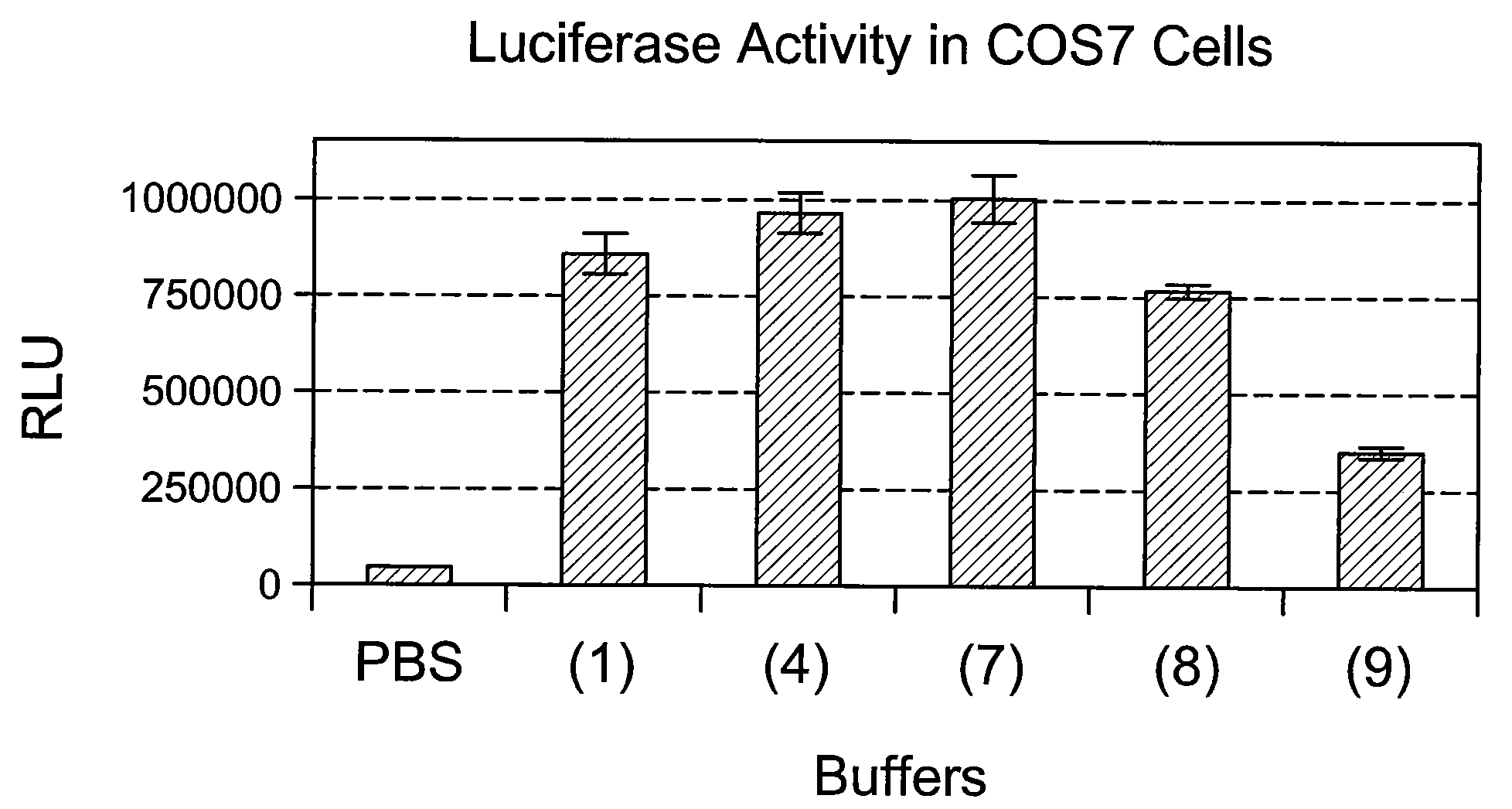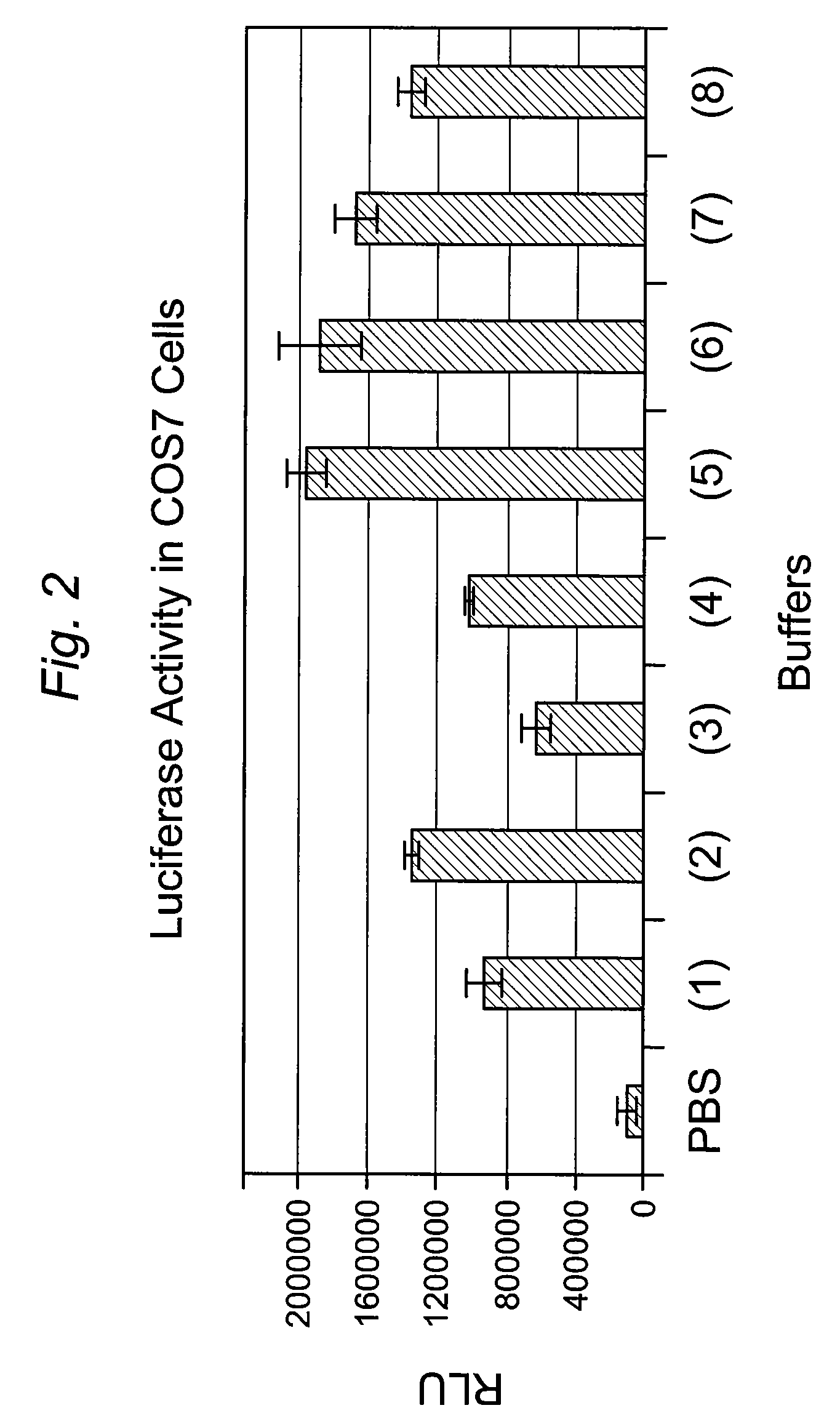High Efficiency Electroporation Buffer
a high-efficiency, electroporation buffer technology, applied in biochemistry apparatus and processes, organic chemistry, sugar derivatives, etc., can solve the problems of limited applicability of certain concerns, achieve high transfection rate, preserve cell integrity and viability, and low ionic strength
- Summary
- Abstract
- Description
- Claims
- Application Information
AI Technical Summary
Benefits of technology
Problems solved by technology
Method used
Image
Examples
examples
[0019]Stock solutions of the individual components for test electroporation buffers were prepared as follows. A 0.2 M potassium phosphate buffer was prepared by dissolving 86.6 mL of K2HPO4 (1M, Catalog No. 60354-1Kg) and 13.4 mL of KH2PO4 (1M, Catalog No. P5655-1Kg) in 500 mL of water. A 1M solution of sucrose was prepared by dissolving 171.15 g of sucrose in 500 mL of water. A 1M solution of trehalose was prepared by dissolving 94.57 g of trehalose in 250 mL of water. HEPES was obtained from Sigma, Catalog No. H0887 at 1M. Magnesium chloride was also obtained from Sigma, Catalog No. M1028 at 1M. EGTA was likewise obtained from Sigma, Catalog No. E4318-10G, and a 0.5M solution was prepared by dissolving 4.7 g in 25 mL of water, adding 10 mL of water with 10N KOH to a pH of 8. The solution was stored at −20° C. Undiluted DMSO was likewise obtained from Sigma, Catalog No. 02650-100H.
[0020]A series of test buffers were prepared with the compositions shown in Table I.
TABLE ITest Buffer...
PUM
| Property | Measurement | Unit |
|---|---|---|
| conductivity | aaaaa | aaaaa |
| pH | aaaaa | aaaaa |
| size | aaaaa | aaaaa |
Abstract
Description
Claims
Application Information
 Login to View More
Login to View More - R&D
- Intellectual Property
- Life Sciences
- Materials
- Tech Scout
- Unparalleled Data Quality
- Higher Quality Content
- 60% Fewer Hallucinations
Browse by: Latest US Patents, China's latest patents, Technical Efficacy Thesaurus, Application Domain, Technology Topic, Popular Technical Reports.
© 2025 PatSnap. All rights reserved.Legal|Privacy policy|Modern Slavery Act Transparency Statement|Sitemap|About US| Contact US: help@patsnap.com



